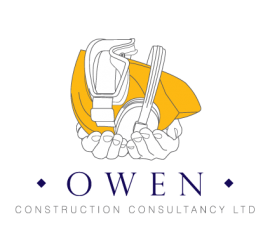In today’s dynamic work environment, it is necessary to ensure that employees are safe and well-kept. One of the most effective strategies for achieving this goal is on-site safety inspections. This inspection helps identify potential hazards, assess risks and implement preventive measures.
On-site safety inspection forms a strong foundation for a safe and sound workspace for all employees. Companies demonstrate their commitment to maintaining a safe and healthy work environment by conducting regular inspections. This practice fosters trust and confidence among the employees and stakeholders.
Want to assess and analyse possible risks at your construction site? Connect with us- Discuss your requirements with an expert health and safety consultant by calling 01689 820105.
Why Are Regular Safety Inspections Necessary?
The safety inspection is necessary for several important reasons, each catering to a unique problem. Here are some reasons why regular safety inspections are necessary:
1. Identifying Hazards
Safety inspection provides an opportunity to identify potential hazards in the workplace systematically. These hazards in the workplace can range from physical damage, such as faulty machinery or slippery floors, to chemical risks, such as inadequate ventilation or a safety suit missing.
By recognising these hazards early on, companies can take proactive measures to address them before they escalate into accidents.
2. Preventing Accidents
Through regular safety inspections, organisations can prevent from possible injuries and accidents. These inspections not only save employees but also protect the company from such unexpected liabilities that may occur due to accidents.
Employees will work more efficiently if they are well aware of the fact that their environment is safe and ready for all possible emergencies.
3. Regulations
Every industry is governed by some special rules and regulations imposed by government agencies for the safekeep of the environment and employees. Safety inspections help organisations to ensure regulations are followed therefore avoiding fines, penalties and legal consequences.
Organisations following all the rules and committed to compliance have higher market value and good reputations in their respective sector.
4. Safety Culture
Safety inspection plays a crucial role in promoting a culture of safety within the organisation. New employees must prefer companies with a safety culture, as this sends a clear message that the company values employees well- being as a top priority.
Safety training and awareness fosters accountability and engagement in safety practices among employees at all levels.
5. Productivity
If an employee feels safe in his/her workplace, then he/she will be more productive. Safety infections help employees to have faith in employers for their safety concerns. Keeping safety as a priority helps them to work in full swing without worrying about machinery or any chemical hazards.
Addressing these issues helps the organisation to optimise their operations, minimise downtime and enhance overall productivity.
6. Employee Morale
If employees feel safe and valued at the workplace, their morale and job satisfaction improve. Safety inspections demonstrate that management values the health and well-being of its employees, and this responsible behaviour gains employee loyalty, commitment, and job satisfaction.
The positive work environment and employee reviews help attract new talent and retain talent in a competitive job market.
7. Brand Image
Workplace accidents and safety violations can tarnish a company’s reputation and brand image. Accidents and injuries on site lead to bad publicity and loss of customer trust. Safety inspections help mitigate these risks by proactively addressing safety concerns and reducing the chances of possible injuries.
With regular safety inspections can maintain the trust and confidence of customers, investors, and other stakeholders.
8. Cost
Accidents and injuries can result in significant financial costs for organisations. Safety inspections help in reducing these costs by preventing accidents and injuries before they occur. If a safety inspection identifies and resolves a potential fire hazard promptly, this will save the property, and business will not be interrupted.
Regular safety inspection is necessary, and so is taking measures and proactive actions for the safety of all.
Roles and Responsibilities of Health and Safety Consultant
A construction health and safety consultant are professionals who specialises in ensuring that employees and employers follow all the rules and regulations imposed by the government. They are vital in promoting safety awareness and the company’s idea of safety.
They investigate accidents, incidents and safety violations occurring on construction sites and determine the root cause of the accident to prevent recurrence and improve safety performance. Health and safety consultants take initiatives such as job training, formation of safety committees, and data analysis, trends, and feedback.
Consultants develop emergency response plans and procedures to address potential emergencies, coordinate with emergency services and conduct drills to ensure preparedness and effective response in crisis situations.
A key aspect of the role of construction health and safety consultants involves regulatory compliance and risk management. They stay updated on local, national and international health and safety regulations applicable to the construction industry. They also ensure that projects comply with relevant laws, codes and standards.
Their role is wide but majorly focuses on conducting comprehensive risk assessment, developing site-specific health and safe plans, and providing training and education to construction workers on hazard recognition and safe work practices.
If you are looking for a health and safety consultant, contact us at 01689 820105.
At Owen Construction Consultancy, our health and safety consultants work with builders and developers, helping them to minimise risks during their activities. We can produce tailored health and safety policies to ensure that risks have been identified and suitable control measures have been outlined.
Conclusion
Safety inspections are necessary to identify and address potential workplace hazards proactively. Timely identification helps prevent accidents and injuries, ensure regulatory compliance, promote a safety culture, improve efficiency and productivity and reduce costs.
Organisations can create a safer and healthier work environment for their employees by prioritising safety through regular inspections and proactive measures. This will help employees to perform even better.
April 8, 2024
